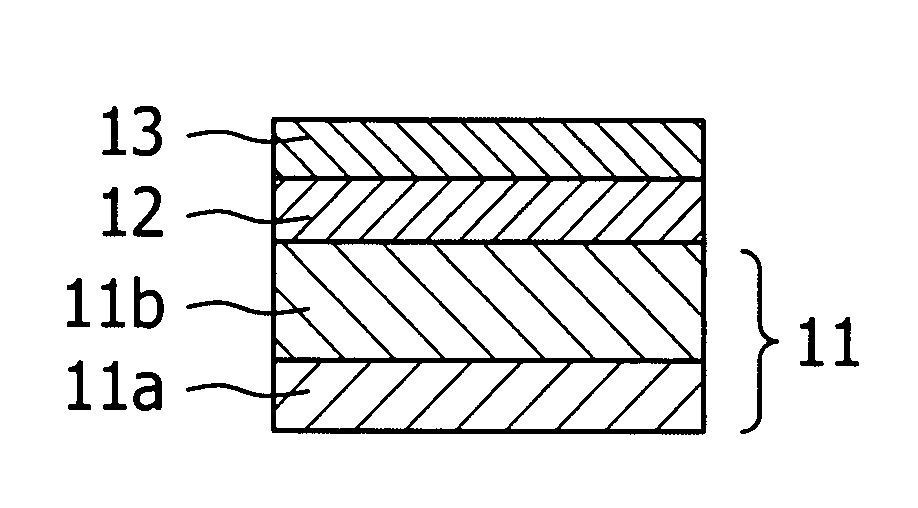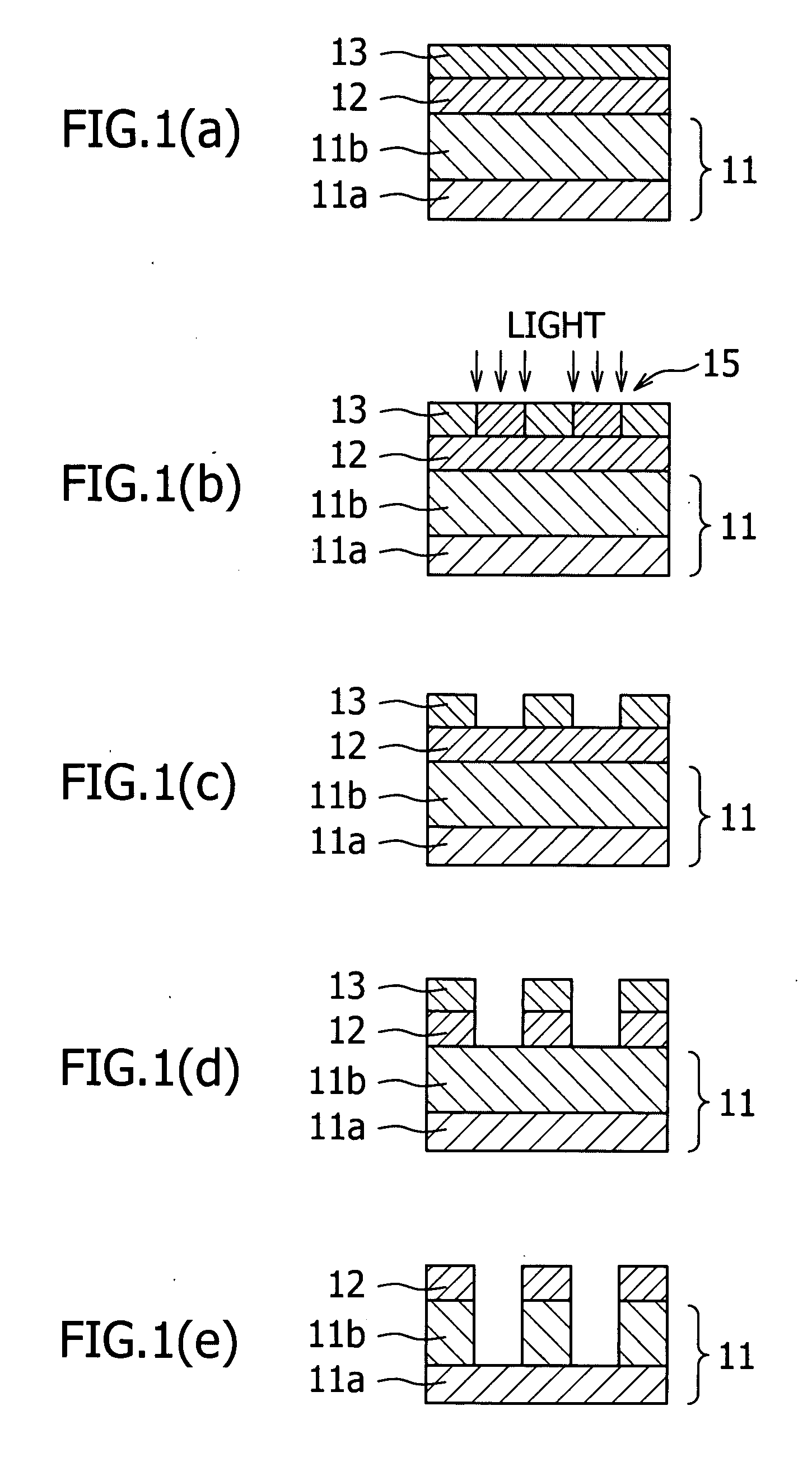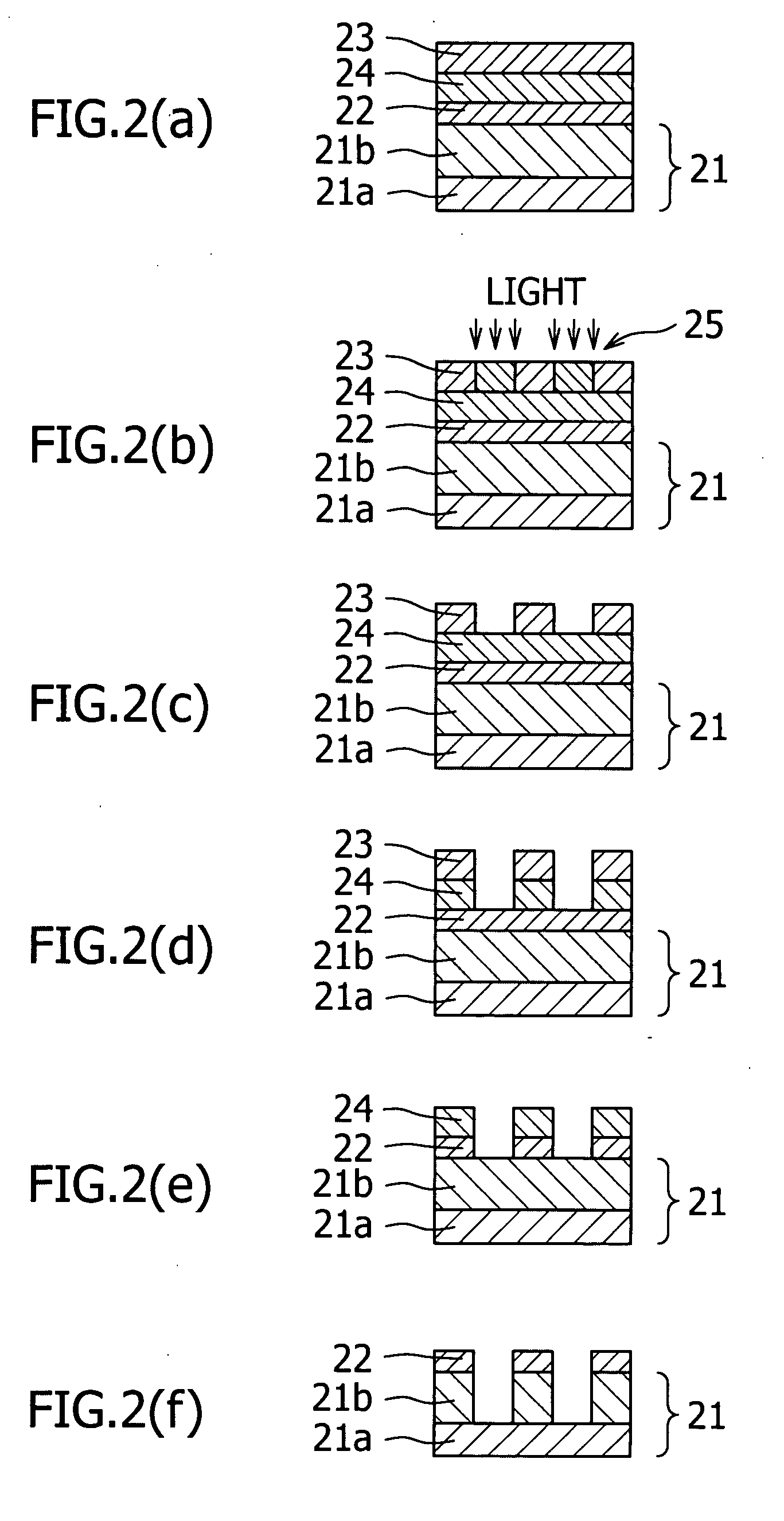Resist lower layer material, resist lower layer substrate comprising the material and method for forming pattern
- Summary
- Abstract
- Description
- Claims
- Application Information
AI Technical Summary
Benefits of technology
Problems solved by technology
Method used
Image
Examples
synthesis example 1
Synthesis of triethylammonium 1,1,3,3,3-pentafluoro-2-(pivaloyloxy)propane sulfonate (TAG1)
[0217]Triethylamine was dissolved in cold water, and hydrochloric acid was added thereto to adjust the pH of the reaction liquid to fall within a range of 1 to 3. Then sodium 1,1,3,3,3-pentafluoro-2-(pivaloyloxy)propanesulfonate and dichloromethane were added thereto and stirred. The separated organic layer was washed with water, and dichloromethane was removed under reduced pressure from the washed organic layer. To the residue thus obtained, diethyl ether was added for recrystallization. The resultant was filtrated and dried to obtain a desired product at a yield of 75%. The structure of the obtained product was identified using 1H-NMR, IR and TOFMS spectra.
synthesis example 2
Synthesis of tetrabutylammonium 1,1,3,3,3-pentafluoro-2-(pivaloyloxy)propane sulfonate (TAG2)
[0218]Commercially available tetra-n-butylammonium hydrogen sulfate, sodium 1,1,3,3,3-pentafluoro-2-(pivaloyloxy)propanesulfonate, dichloromethane and water were added and then stirred. The separated organic layer was washed with water, and dichloromethane was removed under reduced pressure from the washed organic layer. To the residue thus obtained, diethyl ether was added for recrystallization. The resultant was filtrated and dried to obtain a desired product at a yield of 75%.
[0219]The structure of the obtained product was identified using 1H-NMR, IR and TOFMS spectra.
synthesis example 3
Synthesis of triethylammonium 1,1,3,3,3-pentafluoro-2-(benzoyloxy)propanesulfonate (TAG3)
[0220]Triethylamine was dissolved in cold water, and hydrochloric acid was added thereto to adjust the pH of the reaction liquid to fall within a range of 1 to 3. Then sodium 1,1,3,3,3-pentafluoro-2-(benzoyloxy)propanesulfonate and dichloromethane were added thereto and stirred. The separated organic layer was washed with water, and dichloromethane was removed under reduced pressure from the washed organic layer. To the residue thus obtained, diethyl ether was added for recrystallization. The resultant was filtrated and dried to obtain a desired product at a yield of 75%.
[0221]The structure of the obtained product was identified using 1H-NMR, IR and TOFMS spectra.
PUM
 Login to View More
Login to View More Abstract
Description
Claims
Application Information
 Login to View More
Login to View More - R&D
- Intellectual Property
- Life Sciences
- Materials
- Tech Scout
- Unparalleled Data Quality
- Higher Quality Content
- 60% Fewer Hallucinations
Browse by: Latest US Patents, China's latest patents, Technical Efficacy Thesaurus, Application Domain, Technology Topic, Popular Technical Reports.
© 2025 PatSnap. All rights reserved.Legal|Privacy policy|Modern Slavery Act Transparency Statement|Sitemap|About US| Contact US: help@patsnap.com



